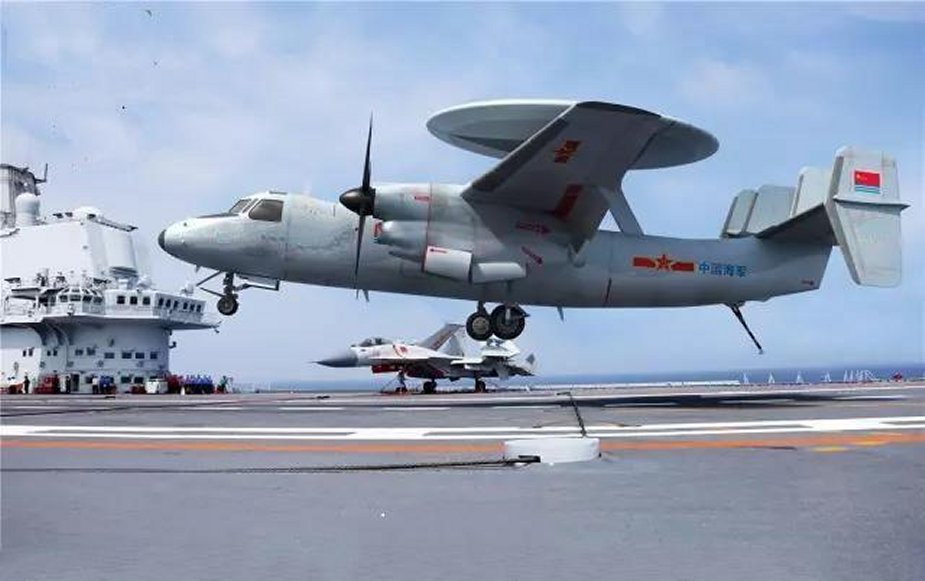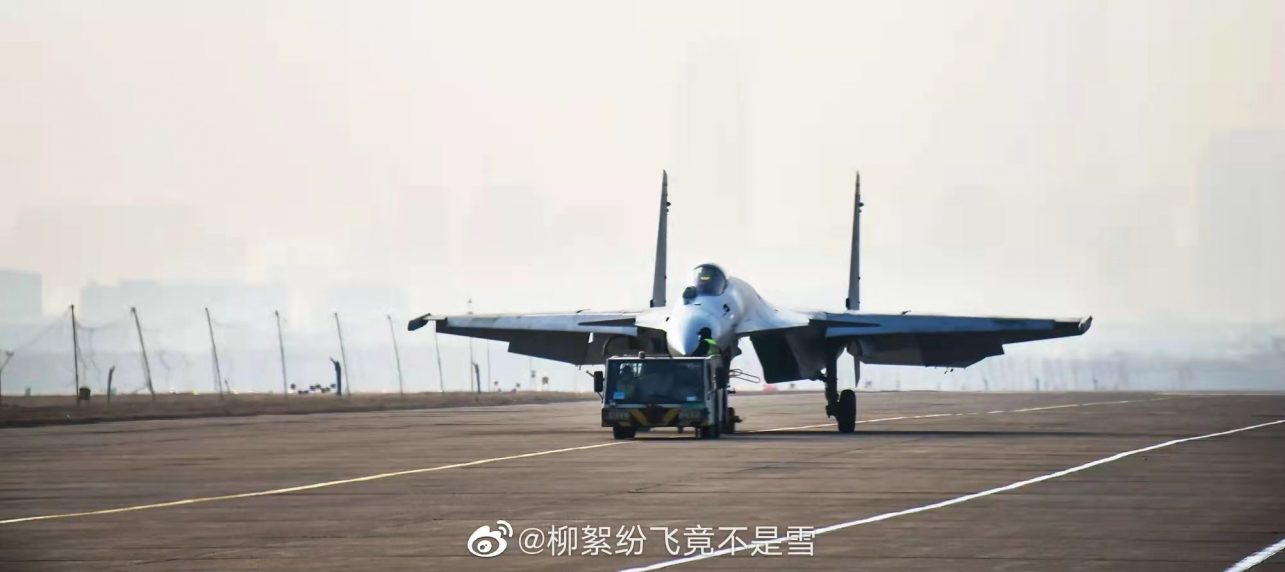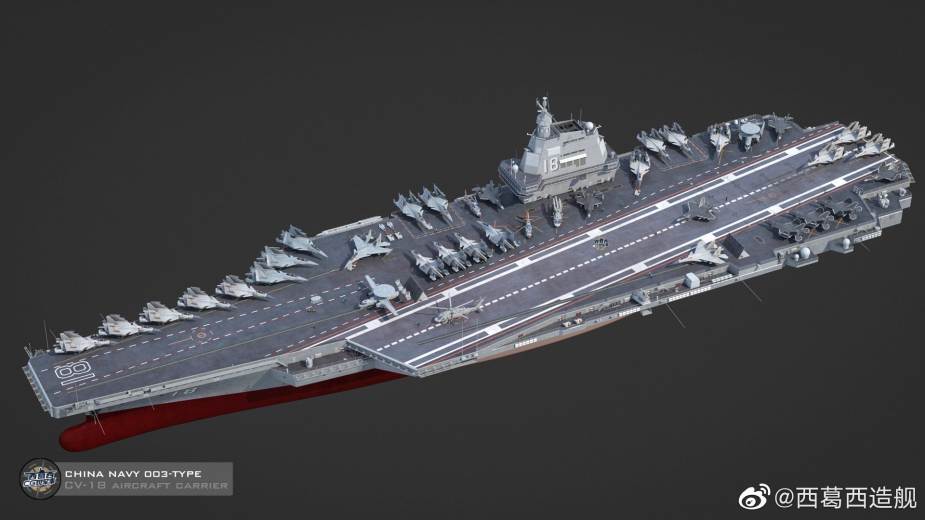On June 17, China finally launched its third aircraft carrier ‘Fujian’ in Shanghai, putting all speculations about the famed Type 003 project to rest. With a displacement of more than 80,000 tons, the Fujian is the country’s first to be equipped with electromagnetic catapults and arresting devices.
World’s ‘Strongest’ Defense Alliance – NATO Keeps Russians ‘Out’, Germans ‘Down’ & China ‘On Radar’
In a new development, Chinese military experts have predicted that China is developing fixed-wing transport and mission aircraft, including early warning aircraft for its latest aircraft carrier, owing to its electromagnetic catapults, state-run Global Times reported.
The speculations come in the wake of the Chinese People’s Liberation Army (PLA) Navy conducting practice landings on aircraft carriers using transport planes.
According to a report from China National Radio, the PLA Naval Aviation University in North China recently hosted a series of training sessions using Y-7 transport planes under realistic combat scenarios.
Meanwhile, the pilot cadets underwent a variety of training programs, including land-based simulation training for transport planes to land on aircraft carriers.
The observers also stated that this was the first time the PLA Navy had opened to the public about preparing transport aircraft pilot cadets for aircraft carrier operations.

Since they use ski-jump ramps, China’s two aircraft carriers, the Liaoning and the Shandong, cannot accommodate fixed-wing cargo aircraft. However, according to analysts, such aircraft may soon be able to operate aboard Fujian, which has electromagnetic catapults.
With the “Fujian,” China skipped the Catapult Assisted Take-Off But Arrested Recovery (CATOBAR) technology and jumped straight to an Electromagnetic Launch System (EMALS) from the Short Take-Off but Arrested Landing (STOBAR) ski-jump on the Liaoning and Shandong, as previously noted by EurAsian Times.
A ski-jump on a carrier flight deck with jets taking off from it under their power is part of a STOBAR system. In CATOBAR, fixed-wing aircraft are launched using a steam-powered catapult, enabling them to use less energy and lift off with more weight.
Meanwhile, the EMALS carry out the same task but with an electromagnetic mechanism powering the catapult, which Fujian is equipped to do.
Fixed Wing Transport For Fujian
China should have fixed-wing transport aircraft now that it possesses an aircraft carrier with a catapult since they are superior to transport helicopters on aircraft carriers in terms of range, speed, and cargo capacity, a military aviation expert from China, Fu Qianshao, told the Global Times.
Owing to the Y-7’s general attributes, such as its size, which are comparable to a carrier-borne cargo plane, Fu said using the Y-7 for simulated training was a good choice. Until now, China has been operating J-15 carrier-borne fighter jets aboard its aircraft carriers, given its limitations over the ski-jump launch.

Compared to China, the US Navy has about eleven aircraft carriers against PLA Navy’s three and already operates cargo and particular mission aircraft aboard its carriers. For instance, the US uses the C-2 Greyhound cargo plane and, based on it, built the E-2 Hawkeye early warning aircraft.
In addition to early warning and control (AEW&C) aircraft, the KJ-600 aircraft platform will also develop anti-submarine and transport versions. pic.twitter.com/R3IfyYFurC
— 彩云香江 (@louischeung_hk) December 2, 2021
According to reports, China developed the KJ-600 early warning aircraft for its third aircraft carrier. According to Fu, it would be simple to produce a cargo plane based on the KJ-600. He also noted that it could give rise to additional special mission variants, such as fixed-wing anti-submarine warfare aircraft based on carriers.
Fujian With Fixed-Wing Cargo Planes
The new technology, comparable to those used by US aircraft carriers, will enable China to launch a broader range of aircraft from Fujian faster and with more ammunition.
The J-15 electronic warfare variant, the J-35 next-generation stealth fighter jet, an upgraded J-15 heavy fighter jet compatible with catapult launches, and armed reconnaissance drones are also anticipated to be included in Fujian’s arsenal, according to media reports.
In December 2021, China unveiled an enhanced version of its J-15 ship-borne fighter jet, with Chinese experts claiming that the modified carrier-borne aircraft would potentially operate with catapults.
According to Chinese media reports, the new aircraft’s missile pylons, infrared search and track system, radar, and wings have all been upgraded.

When asked how having a fixed-wing aircraft operating aboard an aircraft carrier helps, Vice Admiral Shekhar Sinha (retd) told EurAsian Times: “There are two advantages. Firstly, they are used as Carrier Onboard Delivery (COD).
Once the aircraft carrier is out at sea, there will be a requirement to send people and logistics onboard from the nearest shore establishment. The US Navy uses COD plenty.
Second, once it is successful during trials, it could be further modified as AWACS aircraft, just like the E2B/C Hawkeye, which is needed for airborne early warning and control of fighter aircraft for the strike; Combat Air Patrolling (CAP), and air interception/air combat missions.”
Further, a previous report in the Global Times said that China’s Navy, unlike the United States, is only employed to defend its national sovereignty; thus, the potential use of the new aircraft carrier will be restricted to the three security-related flashpoints of the Korean Peninsula, Taiwan Strait, and the South China Sea.

“(The US) instead (uses its carrier battle groups) to achieve world hegemony. (Its goals are) coastal defense and far sea escort, and this means the third aircraft carrier will excel at combat missions on the doorsteps of China, including the Taiwan Straits and the South China Sea, even facing possible aggressions by US carriers, and it can also serve its purpose in escort missions far away from China,” the report said.
With the tensions rising between China and the United States in the Indo-Pacific, forward deploying its aircraft carrier with cargo planes that could be used for Carrier Onboard Delivery would potentially elevate China’s combat capability and challenge the United States and its allies in the region.
- Contact the author at sakshi.tiwari9555@gmail.com
- Follow EurAsian Times on Google News




